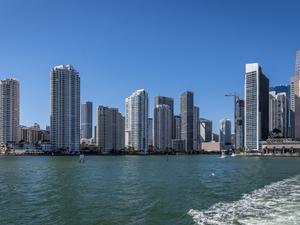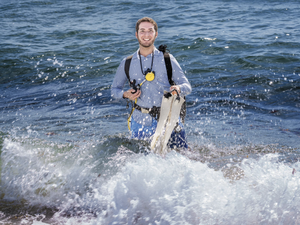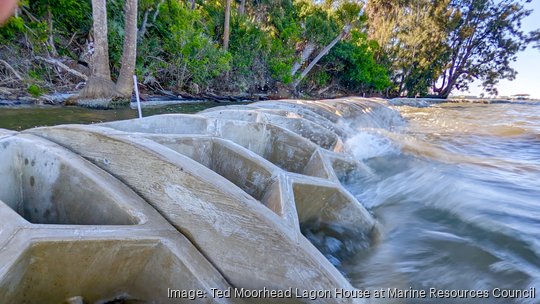
Living shorelines aren't a novel concept.
Plants, trees, rocks and other natural elements have long been used to protect coastal areas from erosion and create habitats for marine life.
Palm Beach County startup Reef Arches took inspiration from natural shorelines to create a patent-pending device that promotes coastal preservation.
Launched in early 2023, the West Palm Beach company is the maker of concrete arches with a honeycomb design that reduce the energy of incoming waves to mitigate shoreline erosion. The 1,200-pound arches are constructed from CSA concrete, a less acidic material than the concrete used in traditional seawalls. As a result, coral, oysters, mangroves and other marine life can grow on and through the structure, preserving or even restoring those habitats.
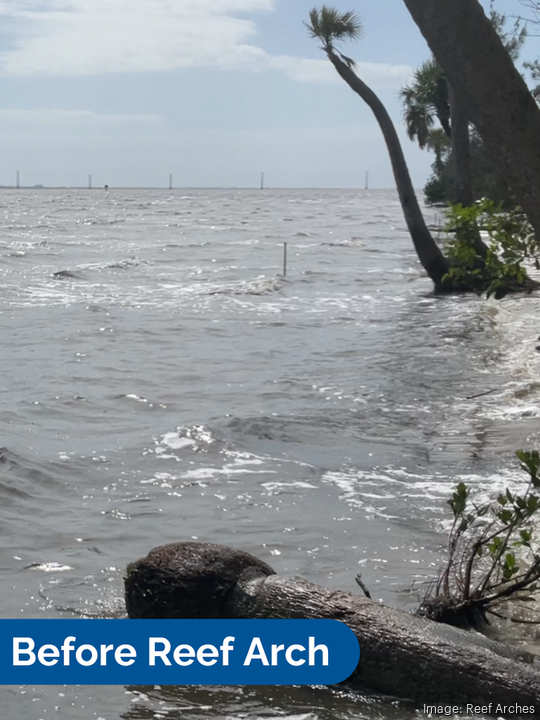
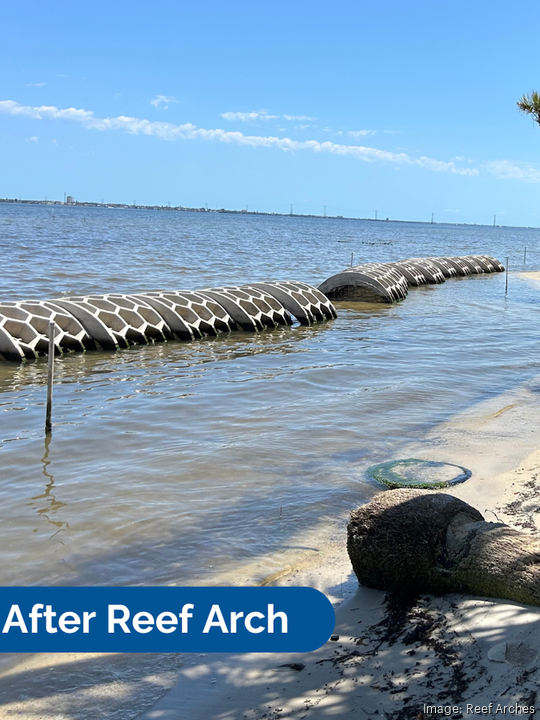
"Our design is what stands out," co-founder Nicholas Bourdon said. "The arches are like Lego bricks. We can stack the arches as needed to slow down waves and create habitats. It's similar to a barrier reef."
The company is offering a solution for a very real – and expensive – problem. Coastal erosion, or the wearing away of rocks, sand and shoreline by sea level rise and wave action, already causes about $500 million worth of property loss a year in the U.S., according to the National Oceanic and Atmospheric Association.
Related: Billionaire Mark Cuban invests in Miami climate tech startup
Private businesses are already interested, with commercial and residential developers among its customers. Reef Arches is also working with municipalities like Sebastian Inlet District, Boynton Beach and the Town of Marineland through grants from the Resilient Florida Program, a division of the state's Office of Resilience and Coastal Protection.
The following interview with Bourdon was edited for brevity and clarity.
How did you come up with the idea for Reef Arches?
I came up with the idea in November 2022. At the time, state officials were talking about the need for more resilient coastlines. I got together with my co-founders Parker Hedrick and Keith Richardson, who is an engineer and inventor, and he designed the product we use today. We 3D-printed some molds and stacked them on the beach to see how they worked and whether they would grow oysters. They did. I got in touch with MANG, an organization focused on mangrove restoration, to get their thoughts on whether the arches could support mangrove restorations. My thought was, if we can have a mangrove growing through the arches, then we've really created a living shoreline.
How do the arches work?
The honeycomb design allows water to pass in and out of the structure, slowing down the speed of waves and reducing erosion. The passage of water also creates nutrients for oysters to grow. Algae can also grow, which attracts schools of fish. All of that promotes habitat restoration. One of the biggest advantages we have is how we deploy. You don't need a barge to install the arches. We can take the arches, put them on wheels, roll them down the slope of a beach and then float them to the location needed and place them. From a project cost standpoint and scalability, that's huge.
What kind of challenges have you faced bringing the arches to market?
We have support from the scientific community and we've shown the arches can grown coral. The hardest part is getting it in front of people and keeping up with demand. We're still only 1.5 years old. The orders we get tend to be big – they'll be like, 'hi, we need enough arches for a mile and a half of shoreline.' There's just so much shoreline that needs protection, in Florida and beyond. And its not just salt water specific. Erosion is happening everywhere. But the good news is we have solutions. You don't have to worry about your beaches disappearing.
Sign up here for the Business Journal’s free morning and afternoon daily newsletters to receive the latest business news impacting South Florida. For more business intelligence, follow us on LinkedIn, Facebook, X (formerly known as Twitter) and Instagram.
